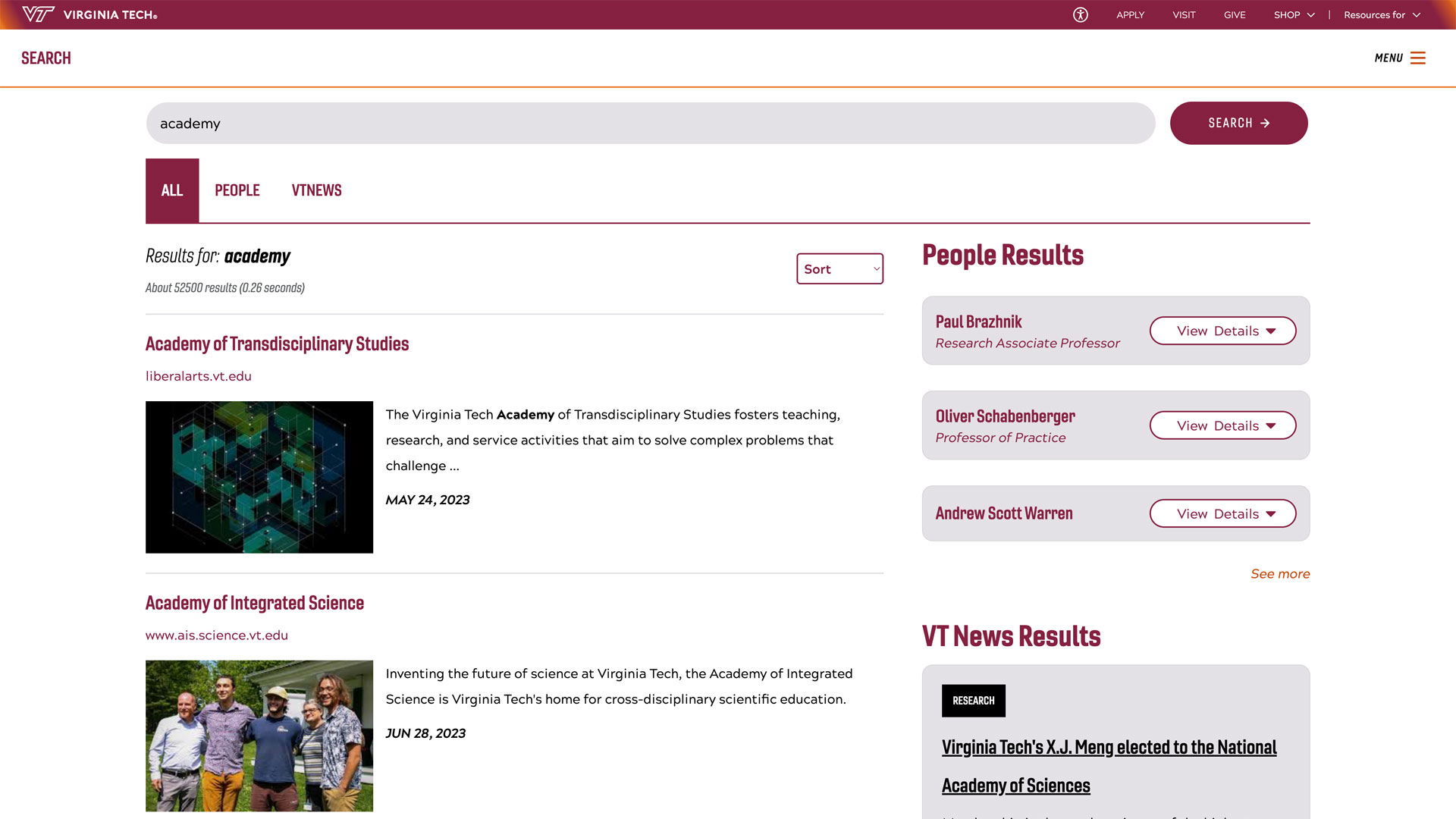Problem-solving cells called pericytes could inspire a new species of supercomputer
A group of engineering and philosophy researchers are looking to the cells’ little-known clustering behavior for computing inspiration.

Is it possible to make a computer that’s both powerful and power efficient, based on the principles of biology? This is the question asked by Virginia Tech researchers in engineering and philosophy, who have teamed up for a project funded by the National Science Foundation Emerging Frontiers in Research and Innovation program.
The team from Virginia Tech includes:
- Gil Hersch, associate professor in the Department of Philosophy
- Benjamin Jantzen, associate professor in the Department of Philosophy
- Suyi Li, associate professor in the Department of Mechanical Engineering
- Amrinder Nain, professor in the Department of Mechanical Engineering
- Noel Naughton, assistant professor in the Department of Mechanical Engineering
Also joining the team is Julie Phillippi, associate professor at the University of Pittsburgh.
The researchers are taking their inspiration for a biologically based, energy-efficient computer system from the human brain. But they're not looking at neurons. Instead, they're studying the behavior of a problem-solving cell called a pericyte to uncover new ways for machines to process information while saving power.
The landscape of technology
The first electronic computer was turned on less than 100 years ago — just after World War II — and was a behemoth of a machine. It was housed in a room measuring 30 by 50 feet, weighed 30 tons, and consisted of some 18,000 vacuum tubes. It had its own dedicated power lines and stored data on physical paper cards punched with holes that could be read back into the computer.
Today’s computers are vastly different. While that first computer could perform 5,000 cycles in one second and required its own section of a building, today’s average smartphone weighs about 6 ounces, fits in a pocket, and processes billions of cycles per second. There are still rooms filled with computers, but those are now clusters of high-powered supercomputers with the processing power of 50,000 laptops, operating entire sections of the internet as opposed to the calculations of one office.
The use of supercomputers has grown with the power of the technology. Today’s machines power everything from online video games to medical services, and the list continues to grow. The rapid expansion of artificial intelligence has escalated that demand.
As the deployment of new supercomputers expands, so do the resources required to sustain them. These clusters pull 2 percent of the total U.S. energy production, establishing them firmly as one of the largest types of consumers.
This unprecedented need for power has driven a push for new solutions. In September 2024, Microsoft started the process of retasking the Three Mile Island nuclear facility to power its own data centers. Other computer clusters have been submerged in the ocean to cool them, reducing the energy required.
The biological world may hold a better solution to the power problem. The energy efficiency of the brain is highly superior to a supercomputer, performing multiple simultaneous mathematical calculations that would require 1 million times the power in a comparable machine. Humans do not require the power of a nuclear plant to fire their neurons, and a biologically based computing system built on that model could revolutionize the computing industry.

But what is a computer? And how may biological elements inspire one?
Zooming into life-inspired options
Because the brain is the supercomputer of the human body, other researchers have made it the choice to serve as a biologically based computer. Neurons do a lot of the work in the brain, but they aren’t the only type of cell making a valuable contribution.
“A lot of people are looking at neurons, which have electrical activity,” Naughton said. “Cells do a lot more complicated things than that. While we’ve been exploring applications, the advance of this project is asking more fundamental questions about what information processing by these cells looks like.”
This team is using a different cell: a pericyte. It appears to have a somewhat minor role at first glance, but it is anything but simple. These cells aren’t only in humans, or even exclusive to the brain. In almost all animals with a circulatory system, they manage the flow of blood. They don’t get the same amount of attention as neurons, but they still hold unique abilities.
Team members Nain and Phillippi made a discovery about those abilities in a prior project, in which they studied the clustering of the cells into ball-shaped formations called spheroids.
“Dr. Phillippi and I discovered that, over a period of time, pericytes start merging together,” said Nain. “We were curious if there was intelligence attached to that merging, perhaps in the way they know how to come together.”
To answer that question, the team will conduct biological experiments to test the way the pericytes come together. They will explore the ways the cells overcome obstacles and learn to navigate a new path, giving insights into the logic that comes into play.
But how does that relate to computing?
The algorithm and the biorhythm
Computers were created to solve problems. Whether it’s a complex math equation or today’s ChatGPT generation of sentences, accomplishing an objective is the point of bringing together the hardware and software that have become so familiar to us.
Problem-solving is also the work of pericytes as they form clusters. Naughton explained that as those clusters materialize, the team has theorized that there is a wealth of information to be found in studying their behavior and describing it mathematically. That mathematical description is the basis of a new type of intelligence.
This kind of intelligence applies to reservoir computing. The objective of reservoir computers is less about repeatable computation and more about mimicking dynamics. It’s a method of problem solving that builds on being agile and adaptable.
Reservoir computing may not look like a home computer; the active pieces are behaving differently. It might be helpful to envision the two different types of computers as music performances. A laptop running its software is like a musician that does not deviate from their sheet music. Based on its programming, it performs its tasks based on what is put into it. The results are predictable and consistent. Reservoir computing is more like a jazz musician: information is still being generated, but it comes in a different form.
Instead of being predictable, the “music” is being performed in such a way that the musicians create something that evolves as it goes, changing its form to overcome obstacles. The drummer drops out, the guitarist steps up. The beat changes and everyone adjusts so that the goal is achieved.
The pericyte cells do this when they form clusters, and the way they accomplish this is a method worth learning, the team believes. Dynamics such as these are the foundations of artificial intelligence and machine learning, and could pave the way for new methods for creating both.
The products of this intelligence have yet to be seen, but in an imaginary future, could these cells give insights into new ways to predict the weather? Maybe show the movement of financial markets or an unforeseen shift in the earth’s crust? It's possible.
Respecting the smallest units of life
Because the project examines the potential intelligence of living cells as a biological model, the team also includes two researchers from the philosophy department. Jantzen has a background in biophysics and fluid dynamics, his work bridging engineering, science, and the humanities. Hersch has expertise in bioethics. Together, the two will press the conversation of how a living cell should be regarded when it is put to work in research like this. What is an individual? How does the demonstration of intelligence define an individual? If the thing that shows intelligence is made of living cells, how do ethics apply?
As these disciplines converge, Li is leading the team through some uncharted waters, exploring unusual subject matter that has been largely unexplored for this purpose.
“Everyone on this team has a different idea of how they think it might go,” Li said. “We’re just scratching the surface of what these cells might teach us, but this provides a lot of exciting possibilities for the future.”




